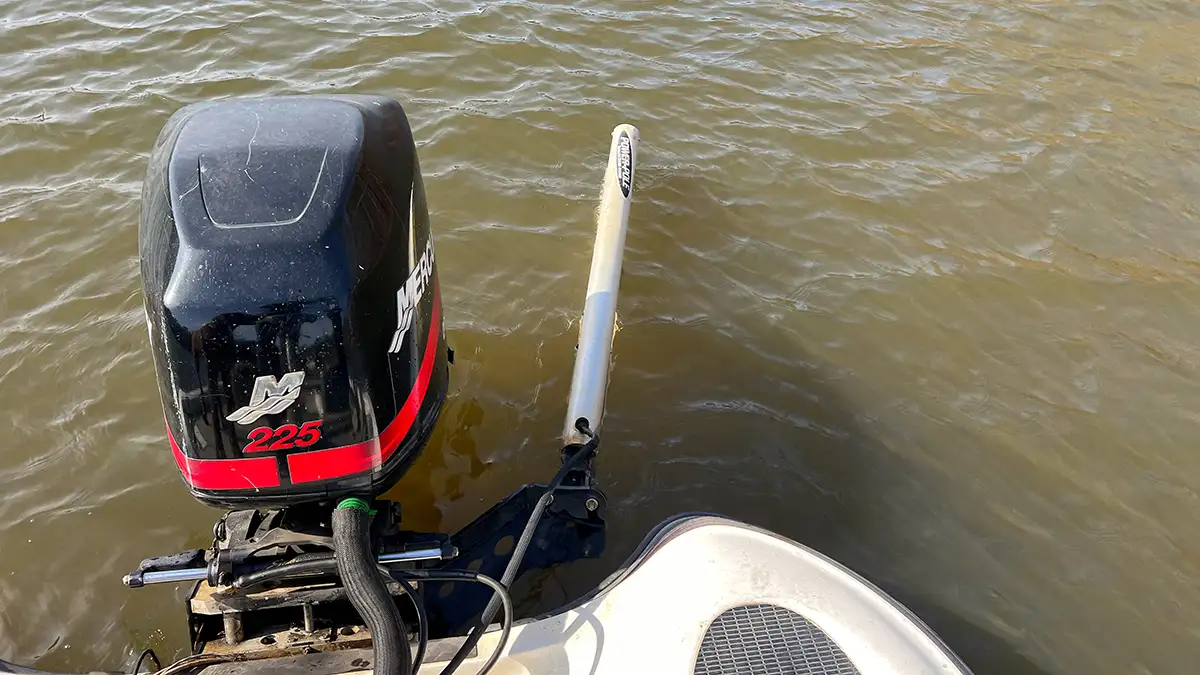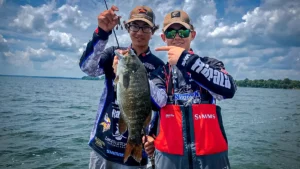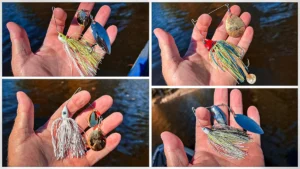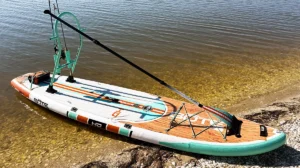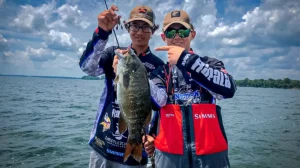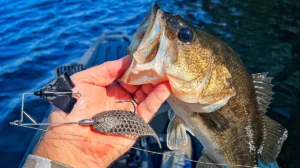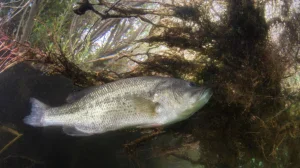In the last few weeks, I’ve found myself fishing without a trolling motor multiple times. This is certainly a change of pace, as I spend most of my time fishing from the front deck of a bass boat using a foot-controlled trolling motor.
During the Thanksgiving break, I set out with a few members of my wife’s family on our cousin’s skiff. He was saving up for a trolling motor at the time, but we wanted to go fishing. So, I assured him we could figure out how to make do that day and still get out on the water. We did, and I learned some things in the process.
And then a couple weeks ago back in Alabama, I put my boat in with a buddy only to find one of my trolling motor batteries was so dead that the motor wouldn’t even switch on. The battery had to be replaced after that outing, but I was determined to fish anyway that day, and we did so for four hours without a trolling motor.
I’ve also had a trolling motor go out an hour and a half from the ramp on the Kissimmee Chain before, during a tournament. And I’ve spent a decent amount of time fishing from a kayak with no trolling motor at all.
In all this time, I’ve found that there are some prevalent themes and tips that can be used across the board when fishing without a trolling motor. Some of these have been hard acquired. Some simpler than others. And some more useful. Here are my findings in their entirety.
PADDLE OR PUSH POLE
Using a paddle or push-pole to help maneuver your boat is one of the most obvious tips to start with. Paddles are fairly inexpensive, and it’s a good idea to have a paddle in a boat in case of emergency anyway. There are some great push-poles on the market for maneuvering in shallow water as well, but something as simple as a 2×4 can suffice in a pinch.
DRIFT WITH THE WIND
Wind is either your greatest enemy or your greatest asset when fishing without a trolling motor. If you choose to fight the wind, you’ll fight it the whole time. But, if you find a way to “play the wind”, you can use it to your advantage. This looks like picking a bank, flat or other area where the wind can gently blow you along, allowing you to cover water even without a trolling motor.
TURN THE WHEEL
You can use the outboard engine of a big boat to fine-tune the advantages provided to you by the wind. You can also do this in a kayak, if yours is equipped with a rudder. By turning the motor or rudder to one side or the other, you can slightly adjust the direction the wind blows you down the bank.
For instance, if you choose to fish a bank on your left with the wind at your rear, but it’s blowing you slightly towards the bank as well, turn the wheel or rudder to the right and the boat will actually blow straight down the bank instead of towards it, as the nose of the boat fights to turn outward.
IDLE IN AND OUT
It’s a good idea to be wary of making noise on the water. Anything that alerts bass to the presence of something out of the norm in their area should typically be avoided. But I’ve personally experienced a few instances where the idle of an engine had little to no effect on the fish. One time in particular in a club tournament, my cranking battery died late in the day.
My dad jumped my boat off for me with his boat so that I could get the motor to crank. I only had about 20 minutes left in the day, so I let the motor idle to recharge the battery while I fished on, concerned that if I turned it off it wouldn’t crank again. I actually caught a 7-pounder in a foot and a half of water on a squarebill in the time I had remaining… with my engine running.
So, bass are likely less bothered by the steady noice of an outboard than we may think. And picking areas to fish where bass regularly hear motors, like a marina for example, is an even better way to use the big motor to move you around a little without concern of scaring the fish.
HOLD IN HIGH PERCENTAGE AREAS
Picking where you fish when you don’t have a trolling motor is very important. If you select an area with a lot of cover or a high concentration of fish, you can sit still in one spot and fish for a long period of time. You can use a traditional anchor or shallow-water anchors like Power-Poles to hold yourself in one spot.
You can even trim your outboard down into the mud if you’re fishing shallow enough, using the lower unit to anchor yourself out for a few seconds, before trimming it up and letting the boat float forward a bit, then repeating the process. During the recent trip when my trolling motor battery went kaput, I used a similar process with my Power-Pole and it allowed us to fish a few shallow pockets slowly with the help of the wind. And we caught a couple bass doing it.
You can also use the big motor to beach your boat in a patch of dense vegetation. I spent a day on the water with JT Kenney years ago flipping massive mats of lily pads down in Florida. He would use his outboard to plow his way into the mats some 50 or 60 yards, then shut the engine off and fish from the front deck of his boat for 15 to 20 minutes without ever even attempting to drop his tolling motor in the water. Then he’d crank-up, plow ahead again and repeat the process, stating that the bass really didn’t mind all that much and that they’d settle right back in a couple minutes after the motor shutoff each time.
USE A BAIT TO GUIDE YOU
You can actually use your lures to help steer the boat as well, in a couple different ways. These methods are unorthodox for sure and are much more effective in small metal boats and kayaks, but they can even be used in big boats to some avail— as my friend and I found in my handicapped Triton recently.
Using a bait with a lot of resistance, like a spinnerbait or ChatterBait, you can actually cast out in front of the boat and pull yourself down the bank gradually. This again works best with a small boat like a kayak, but I was even able to use a spinnerbait with a number 6 willow leaf blade recently to pull my Triton along a little bit. And I could toss it out perpendicular to the boat, let it sink a little and then burn it in to turn the boat slightly, adjusting the course as we blew down the bank.
I also intentionally allowed my jig to hangup in grass and wood from time to time, so that I could use the heavy-pound test line to pull my boat forward a bit. Again, these aren’t things that I would suggest as common practices as much as they are tips that can be used to make the most of a bad situation. That’s what my buddy and I were able to do that day with the dead trolling motor battery, and it allowed us to catch a couple fish instead of our whole day being a wash.
Fishing without a trolling motor, whether by design or out of necessity, can be a little challenging to say the least. But by using these practices, you can make the most of a bad situation and find that catching fish without a trolling motor may not be as hard as you once thought.




